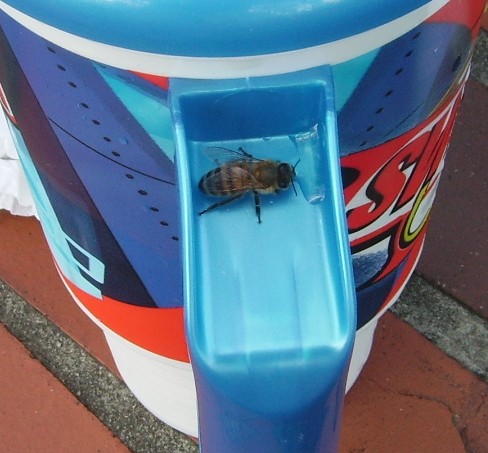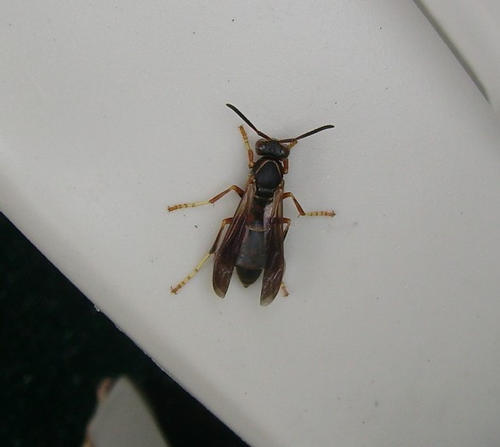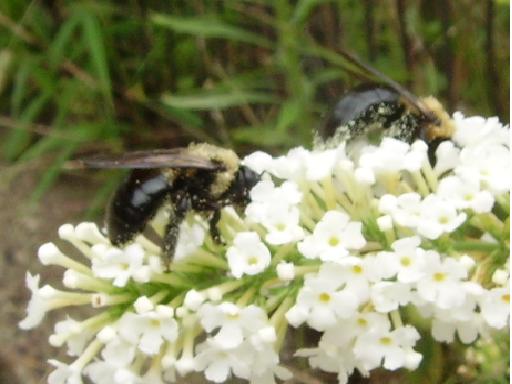Honey bees are brown and furry

Honey bees are a very important part of our world.
Honey: they produce about 200 million pounds of it every year.
They also pollinate plants, helping to produce fruits and vegetables.
Wasps contribute by preying on many pest insects harmful to crops.
Without bees and wasps, our menu would be very limited.
Honey bees are becoming endangered because of fungus and mites that attack hives.
When Honey bees sting, the stinger usually stays in the victim, and the honey bee dies. They are the only bees that will leave a stinger in you.
Scraping the stinger off is the preferred method of getting rid of the stinger.
Dont squeeze the gut sack attached to the stinger as you can possibly inject more venom into the wound.
|
Yellow Jackets, Pennsylvania ground bee
This critter can deliver multiple stings. Here in Pennsylvania, this bee lives in the ground but in other parts of the US, this type of yellow jacket builds nests..
|
 |
Bumble Bee
The bumble bee’s abdomen is fuzzy, black and yellow. He can also sting several times and run away and do it again tomorrow. He has a look alike cousin called the carpenter bee, but the carpenter bee has a shiny abdomen and does not live in a hive. The bumble bee will live in hives of up to 200 bumble bees. The queen is usually the only survivor after winter, and starts the hive again.
|
 |
Wasps
Wasps come in different sizes all over the world, but here in Pennsylvania, this wasp here can deliver a harsh sting. He usually doesnt go after humans but is discovered under moist newspapers, and plastic toys after a good rain. Wasps hunt for insects and most often feed on spiders. They sting spiders and feed the paralyzed food to thier young.
|
 |
|
Carpenter bees look similar to bumble bees, except the abdomen is shiny...not furry.
|
 |
|
    
|
|
|

|
|
|
|
|
|
|
|
|
|
|
|
|
|







